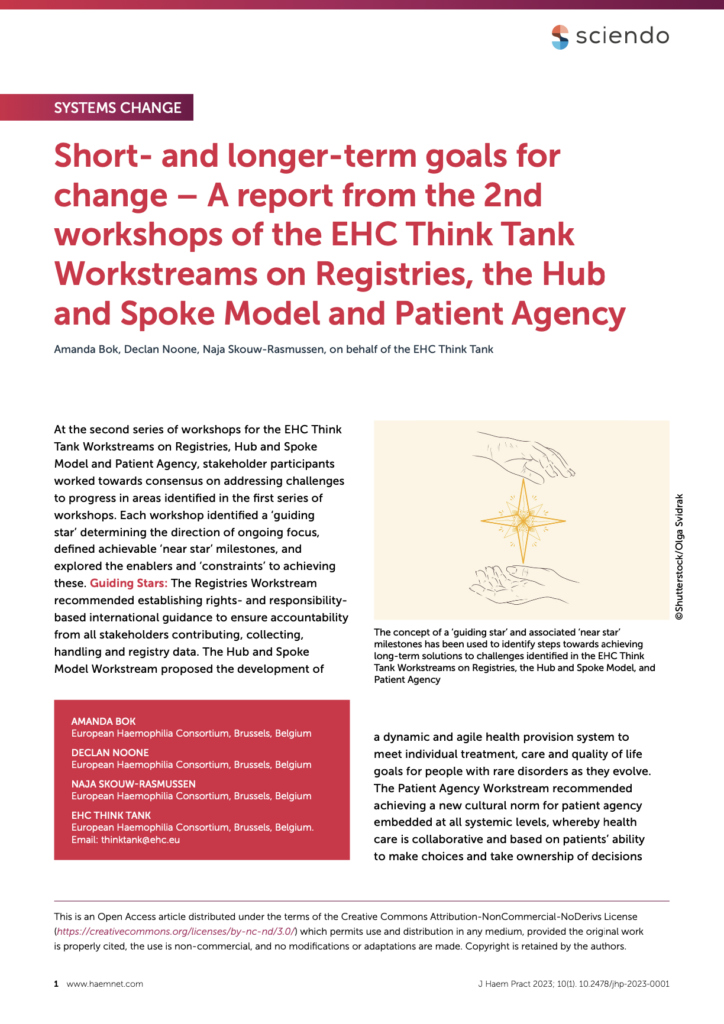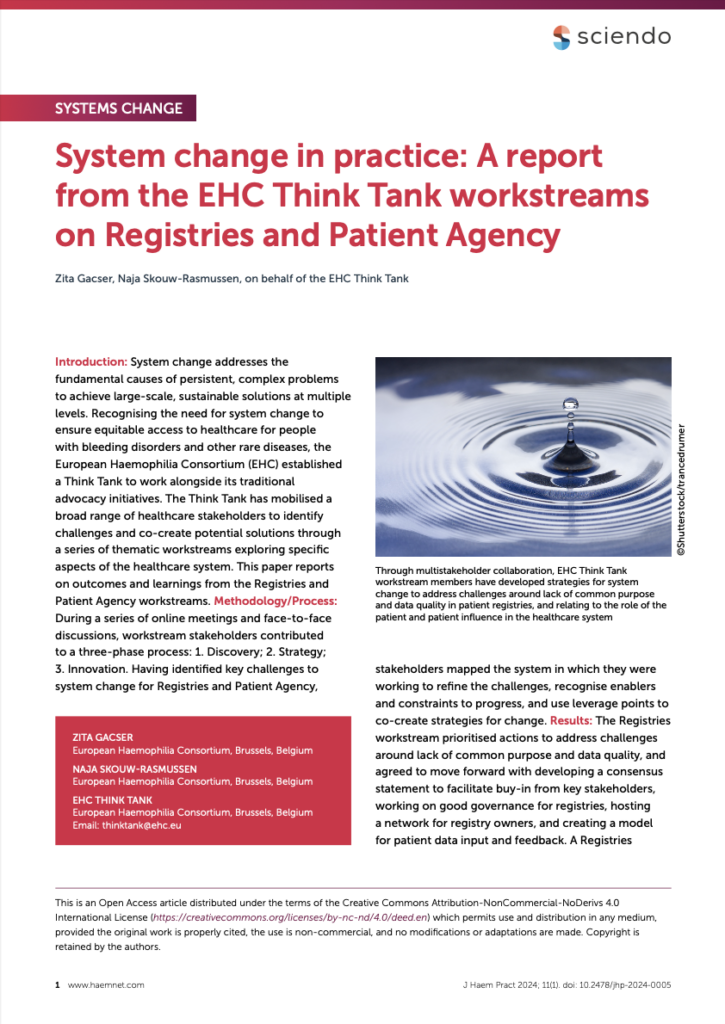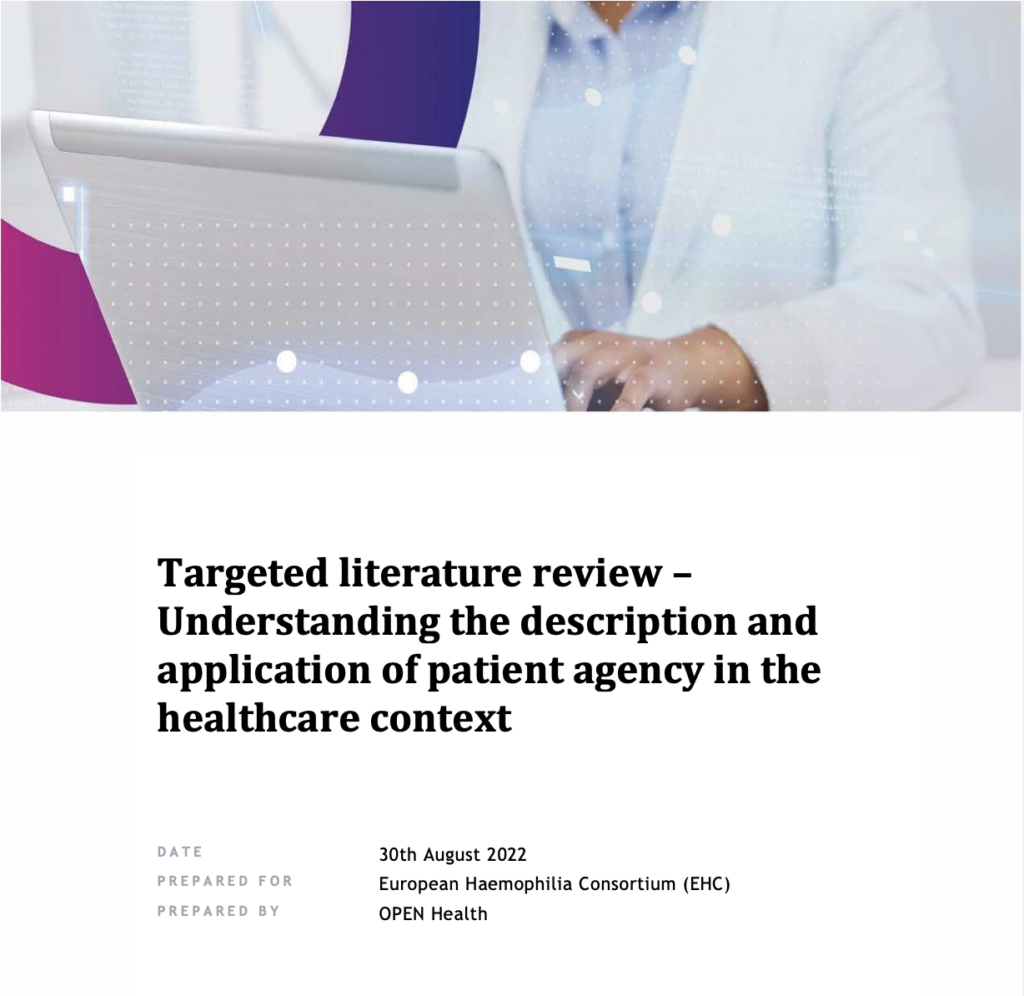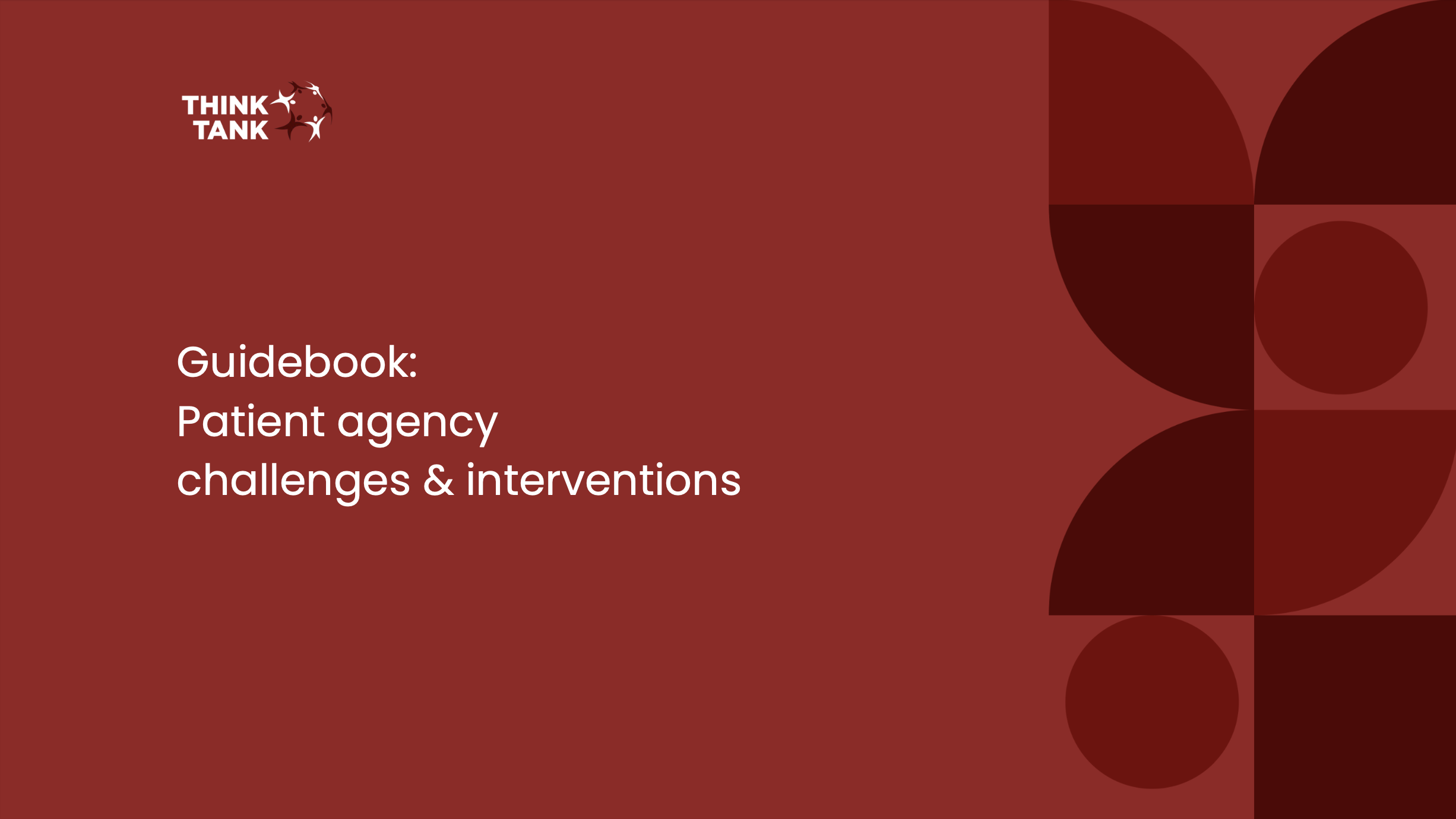The Patient Agency workstream addresses how to meaningfully embed and integrate patient expertise up-front and throughout the design, organisation, implementation, and evaluation of treatment and care as well as capturing and utilising patient preferences, for example, the unmet needs of women with bleeding disorders.
About the workstream
The term ‘Patient Agency’ refers to patient’s ability and capabilities to act. To determine the factors affecting patient agency it is necessary to look at patterns, structures, and mental models. This includes perspectives on shared decision-making, patient preferences and, more specifically, the importance of partnerships, organisation of care, health literacy, and the importance of ensuring institutional changes that are needed, including a profound cultural change amongst all stakeholders.
This workstream addresses how to meaningfully embed and integrate patient expertise up-front and throughout the design, organisation, implementation and evaluation of treatment and care as well as capturing and utilising patient preferences, for example, the unmet needs of women with bleeding disorders.
Composition
The composition of the workstream aims to reflect the diversity of key actors who have hands-on knowledge of challenges and possible solutions in this thematic area. This includes, but is not limited to: patients, healthcare professionals, industry partners, private companies, policymakers, researchers, and academics.
The general membership profile is built around required skill sets and may evolve throughout the co-creation process. The initial skill sets include the ability to ‘problem map’ salient points and their relationships, requiring:
- Hands-on knowledge of the topic area,
- Genuine willingness to learn about, and actively contribute to, a systems change culture,
- Experienced, analytical, open, hands-on ability to remove stakeholder ‘hats’, and
- Respect of Chatham House Rule and culture of conduct and engagement.
Each workstream brings together 16-20 individuals, which is broad enough to ensure a comprehensive overview, while small enough to be workable.
Workload
The mandate duration and meeting cadence are due to change based on collective needs and decisions. However, the preliminary anticipated commitment is three to four (3-4) hours per meeting, once a semester, trimester or quarterly, subject to the above collective decision.
The workstream met for the first time in Q4 2021.
Public outcome
- As part of sharing the outcome of the work of the EHC Think Tank, the first paper from the workstream on patient agency in which workstream members identify five key themes for in-depth discussion relevant to patient agency is now published. Across the five themes, four common perceived challenges stand out: uneven relationships between patients and healthcare professionals, services and systems; paternalism and hierarchical cultures; failure to recognise problems; conservatism and resistance to change. Bok A, Noone D, Skouw-Rasmussen N, EHC Think Tank. Patient agency: key questions and challenges – A report from the 1st workshop of the EHC Think Tank Workstream on Patient Agency. The Journal of Haemophilia Practice. 2022;9(1): 27-35. https://sciendo.com/article/10.2478/jhp-2022-0004
- At the second series of workshops for the EHC Think Tank Workstreams on Registries, Hub and Spoke Model and Patient Agency, stakeholder participants worked towards consensus on addressing challenges to progress in areas identified in the first series of workshops. Each workshop identified a ‘guiding star’ determining the direction of ongoing focus, defined achievable ‘near star’ milestones, and explored the enablers and ‘constraints’ to achieving these. Bok A, Noone D, Skouw-Rasmussen N, EHC Think Tank. Short- and longer-term goals for change – A report from the 2nd workshops of the EHC Think Tank Workstreams on Registries, the Hub and Spoke Model and Patient Agency. https://sciendo.com/article/10.2478/jhp-2023-0001
- The open-access paper, “System change in practice: A report from the EHC Think Tank workstreams on Registries and Patient Agency” reports on outcomes and learnings from the Registries and Patient Agency workstreams. During a series of online meetings and face-to-face discussions, workstream members contributed to a three-phase process: 1. Discovery; 2. Strategy; 3. Innovation. Having identified key challenges to system change for Registries and Patient Agency, stakeholders mapped the system in which they were working to refine the challenges, recognise enablers and constraints to progress, and use leverage points to co-create strategies for change. The Patient Agency workstream focused on enhancing patient influence in healthcare and leveraging digital tools to enable patient contributions for patient-reported outcome and experience measures, culminating in projects such as the Guidebook on Patient Agency and a patient experience data dossier for von Willebrand disease. Gacser Z, Skouw-Rasmussen N; EHC Think Tank. System change in practice: A report from the EHC Think Tank workstreams on Registries and Patient Agency. J Haem Pract 2024; 11(1): 1-10. https://doi.org/10.2478/jhp-2024-0005 https://sciendo.com/article/10.2478/jhp-2024-0005
- Patient agency is a term often used interchangeably in relation to the patient healthcare journey. In order to develop a universally recognised meaning of the term there is a need to understand how it is being defined and discussed in literature. This literature review, prepared by OPEN Health, focuses on reviewing existing research which has incorporated the term ‘patient agency’, and discusses the importance of viewing patient agency as a framework, focusing on the patients’ decisions to engage in their healthcare, and in turn how they then interact with the environment. Targeted literature review – Understanding the description and application of patient agency in the healthcare context by OPEN Health
- As an outcome of the Innovation Summit, the Patient Agency workstream developed a Guidebook on challenges and interventions around patient agency. Each chapter presents a theme, a so-called leverage point identified by workstream members. The leverage points were identified from a system map containing challenges with related enablers and constraints. Based on an analysis and discussion of the map, four leverage points were considered significant to address first: 1. Narrative about patients, 2. Lived experience data, 3. Hierarchy of stakeholders, 4. Health literacy. This Guidebook also contains concrete ideas and a list of examples of what others are doing in the field as sources of inspiration. EHC Think Tank Guidebook: Patient agency challenges & interventions.
System map of the underlying challenges
A system map is a methodology to better understand a particular issue by visualising the challenges, related constraints, and enablers. The system map aims to give an overview of the issue at hand while balancing the detail level.
The map is built from the participants’ discussions and vetted by participants throughout its development. The key challenges identified are:
- The role of the patient
- Collaboration
- Narrative in healthcare and about the patient
- Education + training
- Patient-centric healthcare system services
- Increased diversity
These challenges are the result of the exploration of the root causes for the initially identified challenges, including the concept of shared decision-making, patient empowerment, the spectrum of engagement, cultural change, health literacy, the patient organisation as a discipline or movement, and collecting lived experience.
It is important to remember that the system map illustrates the situation here and now and does not include ideas and wishes for the future. Thus, it is dynamic and should look different in the future as initiatives evolve, resource flows change, opportunities arise, or new challenges occur.
The map is interactive and gives you an opportunity to zoom in on particular circles and connections and zoom out to see the bigger picture of connections. To open it in a separate window, click this link.
If you want to know more, please reach out to us.





